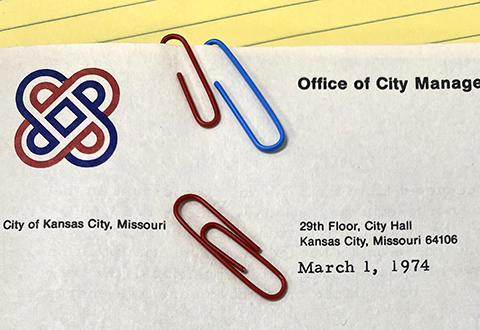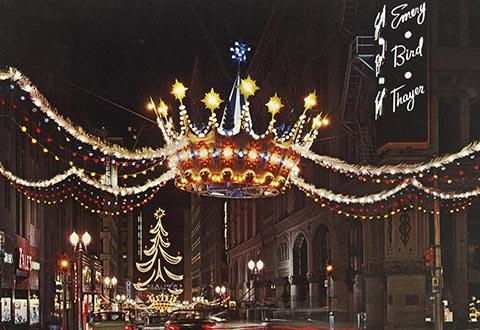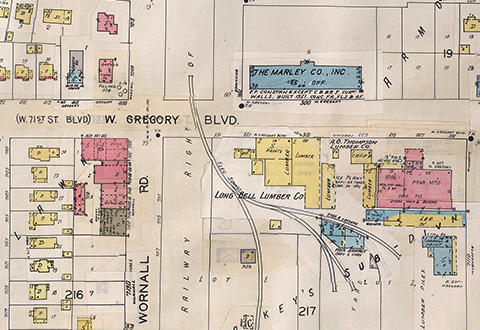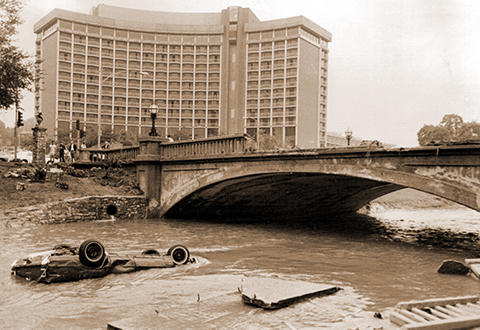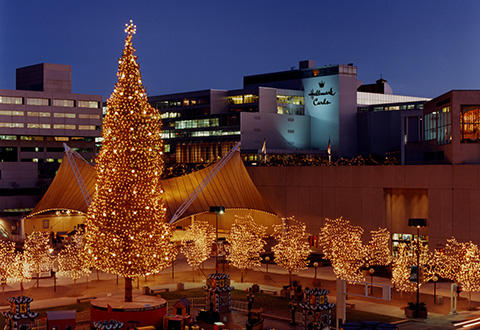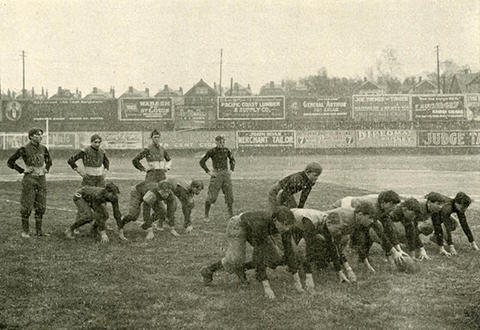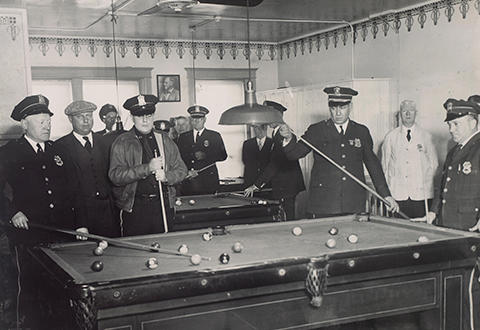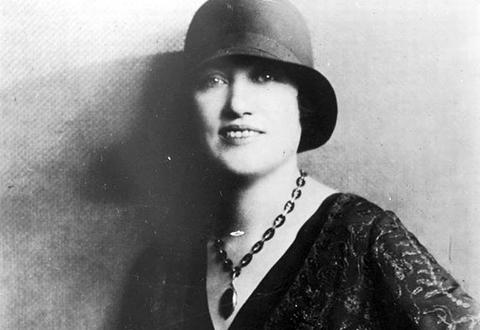A reader recently came across a Twitter post showing the evolution of Kansas City’s municipal seal over time. Two of the three emblems seemed self-explanatory, but one, a red and blue geometric design didn’t seem to have much to do with Kansas City at all. The reader recalled encountering the design on old city documents, and on bits of infrastructure around town. The reader asked What’s Your KCQ?, a collaboration between The Star and the Kansas City Public Library, to investigate the evolution of Kansas City’s seal.
Local History Blog
With the holidays in full swing, a What’s Your KCQ? reader recently wondered: “What happened to the Christmas decorations that used to be displayed downtown, particularly the crowns strung across the streets?” Since City Hall lacks an attic, we couldn’t start our search in the most logical place. In the years before World War I, the downtown Christmas shopping season was a modest affair. The economic boom of the 1920s changed things, and beginning in 1924, the Downtown Merchants Association pooled its resources and festooned the streets with garland and other decorations. In 1925, the association added a parade to kick off the holiday season.
During a recent visit to Cliff Drive in Kessler Park, a reader said, he noticed a turnoff near the west entrance to the scenic byway. He followed the road up a hill and was treated to a spectacular view stretching across the Missouri River into Clay County. Continuing up, he noticed a line of trees at the top of the hill and decided to investigate. He found something peculiar – what seemed to be an abandoned and graffiti-covered, concrete swimming pool surrounded by an iron fence. The reader asked What’s Your KCQ?, a collaboration between The Star and the Kansas City Public Library, “What is the concrete pit atop the hill, and why is it there?”
Missouri Valley Special Collections staff have been hard at work adding new content to KCHistory. Below, you will find a list of newly digitized objects added to the site during the month of November.
Strings of colored lights have been going up on the Country Club Plaza in preparation for the annual Evergy Plaza Lighting Ceremony, and on Thanksgiving night, the holiday season will officially get underway with the flip of a switch. Seasonal traditions on the Plaza are a cornerstone of Kansas City culture; without them, the city wouldn’t be the same. After reading our recent 1951 flood story, a reader thought about what it would mean if a flood hit the shopping district. She asked “What’s Your KCQ?,” a collaboration between The Star and the Kansas City Public Library, about the 1977 flood that damaged the Plaza and other parts of town.
Each year, the Mayor’s Christmas Tree is displayed at Crown Center through the holiday shopping season. Its arrival, sometimes as early as November 3, is a harbinger of the season. A new resident and What’s Your KCQ? reader asked how long the city has had this municipal tradition. Its roots can be traced to the 1870s when the city was still young and hoping new rail connections could help shed its river town image and set it up as a vital connection between western livestock ranchers and eastern markets. At the time, the city’s mayor oversaw administering aid to less fortunate citizens, a duty that Mayor George M. Shelley apparently took seriously. Despite the city’s rapid growth in the 1870s, the winter of 1878 was reported to have been particularly hard on some of its citizens.
Cool, crisp weather. Cheerleaders and marching bands. Big games, big plays, and occasional big hits. For many across the Kansas City metro area, fall wouldn’t be the same without high school football. The thought prompted a reader to ask What’s Your KCQ?, a partnership between The Kansas City Star and the Kansas City Public Library: Wasn’t there a time when football was banned in Kansas City high schools?Believe it or not, yes. There was a period in the sport’s early history when it had a bad reputation among the city’s educators and parents. The Friday night lights, wherever there were lights … went dark.
Missouri Valley Special Collections staff have been hard at work adding new content to KCHistory. Below, you will find a list of newly digitized objects added to the site during the month of October.
The artist, German-born William Weber, is the subject of our first “Art in the Archives” installment. His Civil War float may have been designed for either the Priests of Pallas or German Day parades of the early 1890s, which both took place in October and featured similar themes from history. As we will discover, Weber’s parade float designs are only a small part of his artistic legacy.
For nine days in December 1931, a sensational story gripped the front pages of The Kansas City Star and Times. Wealthy fashion designer and manufacturer Nell Donnelly and her chauffeur had been kidnapped on December 16. Less than two days later, both were released safe, due in part to the efforts of a former mayor and U.S. Senator, as well as an underworld crime boss. The manhunt for the perpetrators would continue into 1932. But it would take more than 70 years for all the details of the incident to become public. A reader recently tasked What’s Your KCQ? – a community reference partnership between the Kansas City Public Library and The Star – with recounting the events of the Nell Donnelly kidnapping. Here’s what we found.

